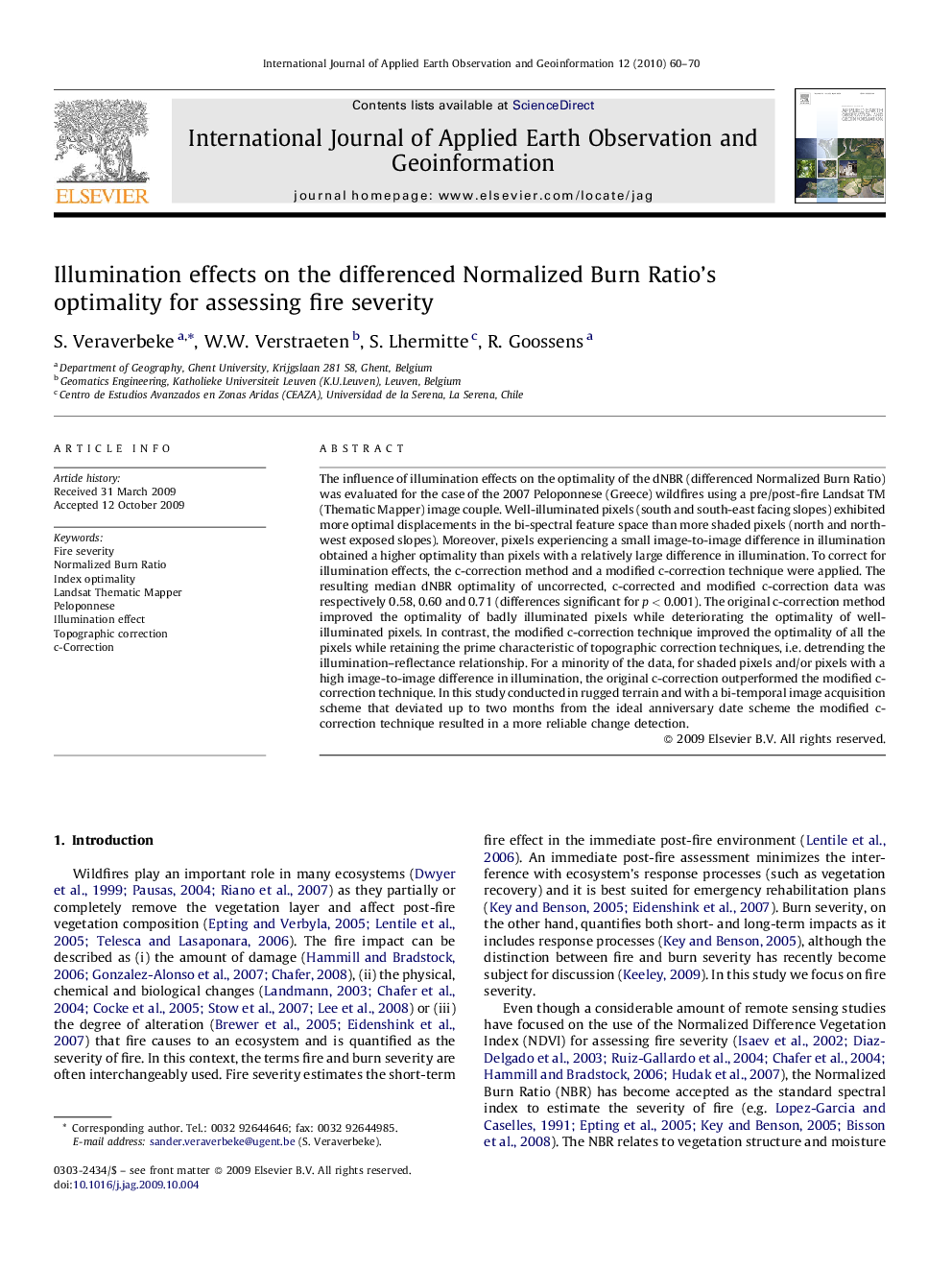| Article ID | Journal | Published Year | Pages | File Type |
|---|---|---|---|---|
| 4465141 | International Journal of Applied Earth Observation and Geoinformation | 2010 | 11 Pages |
The influence of illumination effects on the optimality of the dNBR (differenced Normalized Burn Ratio) was evaluated for the case of the 2007 Peloponnese (Greece) wildfires using a pre/post-fire Landsat TM (Thematic Mapper) image couple. Well-illuminated pixels (south and south-east facing slopes) exhibited more optimal displacements in the bi-spectral feature space than more shaded pixels (north and north-west exposed slopes). Moreover, pixels experiencing a small image-to-image difference in illumination obtained a higher optimality than pixels with a relatively large difference in illumination. To correct for illumination effects, the c-correction method and a modified c-correction technique were applied. The resulting median dNBR optimality of uncorrected, c-corrected and modified c-correction data was respectively 0.58, 0.60 and 0.71 (differences significant for p < 0.001). The original c-correction method improved the optimality of badly illuminated pixels while deteriorating the optimality of well-illuminated pixels. In contrast, the modified c-correction technique improved the optimality of all the pixels while retaining the prime characteristic of topographic correction techniques, i.e. detrending the illumination–reflectance relationship. For a minority of the data, for shaded pixels and/or pixels with a high image-to-image difference in illumination, the original c-correction outperformed the modified c-correction technique. In this study conducted in rugged terrain and with a bi-temporal image acquisition scheme that deviated up to two months from the ideal anniversary date scheme the modified c-correction technique resulted in a more reliable change detection.
